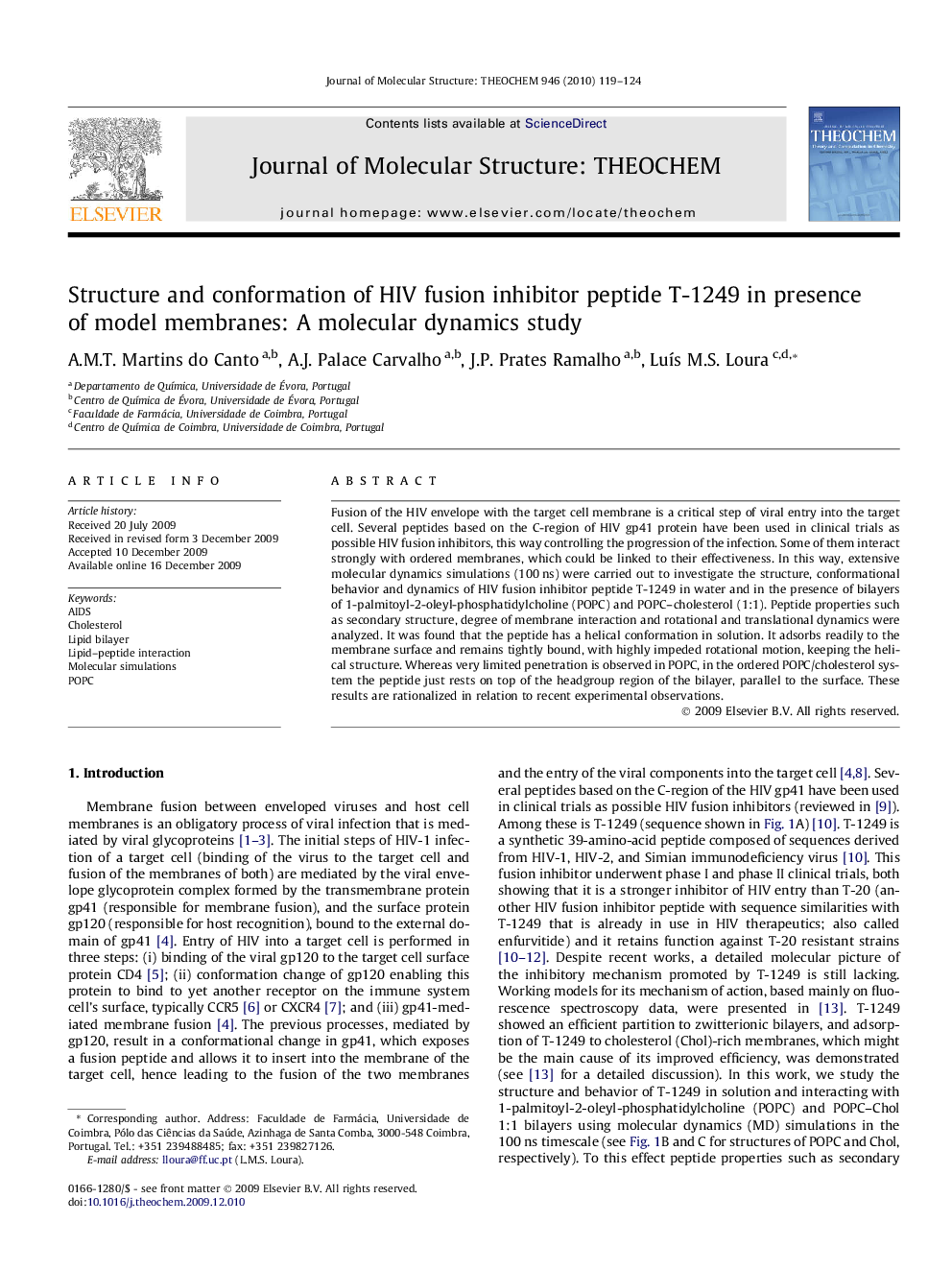| Article ID | Journal | Published Year | Pages | File Type |
|---|---|---|---|---|
| 5417044 | Journal of Molecular Structure: THEOCHEM | 2010 | 6 Pages |
Abstract
Fusion of the HIV envelope with the target cell membrane is a critical step of viral entry into the target cell. Several peptides based on the C-region of HIV gp41 protein have been used in clinical trials as possible HIV fusion inhibitors, this way controlling the progression of the infection. Some of them interact strongly with ordered membranes, which could be linked to their effectiveness. In this way, extensive molecular dynamics simulations (100Â ns) were carried out to investigate the structure, conformational behavior and dynamics of HIV fusion inhibitor peptide T-1249 in water and in the presence of bilayers of 1-palmitoyl-2-oleyl-phosphatidylcholine (POPC) and POPC-cholesterol (1:1). Peptide properties such as secondary structure, degree of membrane interaction and rotational and translational dynamics were analyzed. It was found that the peptide has a helical conformation in solution. It adsorbs readily to the membrane surface and remains tightly bound, with highly impeded rotational motion, keeping the helical structure. Whereas very limited penetration is observed in POPC, in the ordered POPC/cholesterol system the peptide just rests on top of the headgroup region of the bilayer, parallel to the surface. These results are rationalized in relation to recent experimental observations.
Related Topics
Physical Sciences and Engineering
Chemistry
Physical and Theoretical Chemistry
Authors
A.M.T. Martins do Canto, A.J. Palace Carvalho, J.P. Prates Ramalho, LuÃs M.S. Loura,
